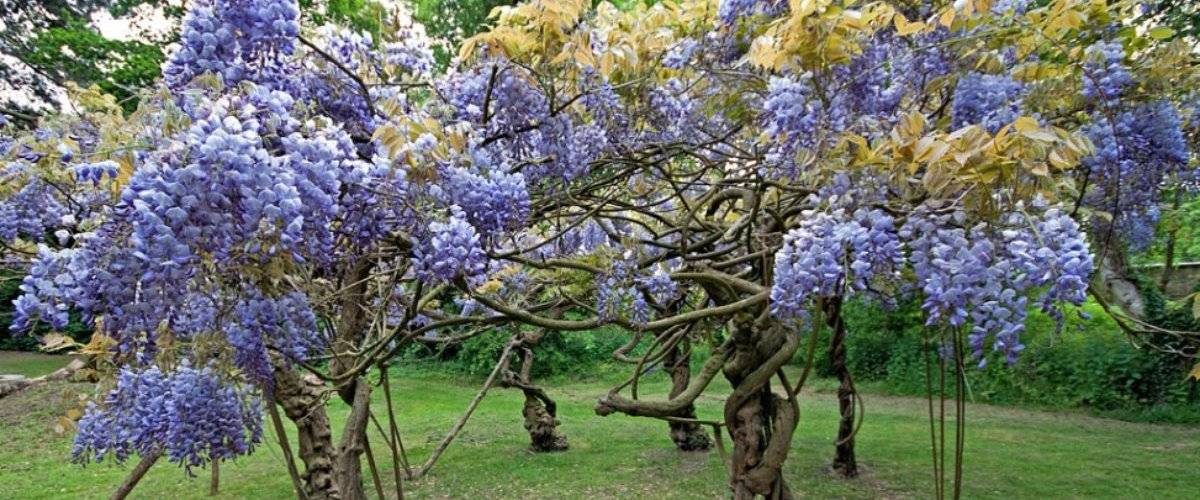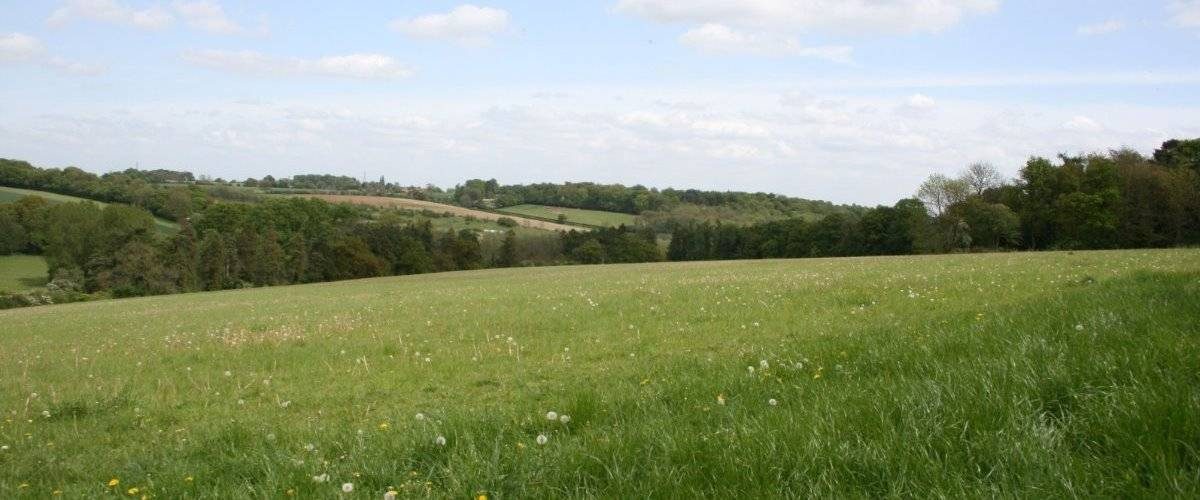Chorleywood House Estate Local Nature Reserve
Open all year
40 hectares of historic parkland in Chorleywood. 19 points of interest
Birds
Bird Hide
Summer bird visitors to the Estate include blackcap, chiffchaff, willow warbler, swallow, whitethroat, house martin and swift. Winter visitors include fieldfare and redwing.
Cattermole’s Community Woodland
Feature Tree
Cattermole�s Community woodland, named after the old Estate head gardener, was planted between 1992 and 1994
Cattermole’s Community Woodland
Feature Tree
Cattermole�s Community woodland, named after the old Estate head gardener, was planted between 1992 and 1994
Chalk and neutral grasslands
Meadow
The Estate contains a network of semi-natural chalk and neutral grasslands which support a variety of wild flowers, insects, small mammals and birds. The most important grassland areas are within The Dell and Dell Field which are grazed each year to help maintain and enhance the diversity of the areas. The area is special because it has unimproved grasslands which support a diverse mix of chalk loving plants, something which is now quite rare. You might be able to spot cowslips, violets, agrimony and scabious to name just a few of the wild flowers.
Chorleywood House History
Site of historical interest
Chorleywood House Estate was originally comprised of just two farms which passed from generation to generation until they were eventually purchased by John Barnes, a wealthy stockbroker. It was John Barnes who replaced the existing farm house with a Georgian mansion. By the 1870s the Estate consisted of the main house, a coach house, stables, several cottages, gardens, pleasure grounds and parklands and was owned by Howard Gilliatt, the cousin of the Lord of the Manor of Rickmansworth. In 1892 the ninth Duke of Bedford bought the Estate for his eldest daughter, Lady Ela Monica Sackville Russell. Lady Ela enlarged and modified the house in to the Victorian mansion we see today. Lady Ela also made many modifications within the grounds to make it as self-sufficient as possible. Please note the Chorleywood House is now private apartments and is not open to the public.
Community Orchard
Feature Tree
Chorleywood Community Orchard began in 2008 and there are now around 140 fruit trees, including apples, plums and cherries, which have all been carefully chosen either because they are old Hertfordshire varieties or are known to thrive locally. The Community Orchard needs maintaining so everyone can continue to enjoy it for years to come. As such volunteers complete a variety of tasks ranging from weeding to formative pruning on the first Saturday of each month: http://www.chorleywood-orchard.org.uk/index.html
Coralroot Bittercress
Plant Bed
Coralroot bittercress is found within the woodland areas, especially Wood Walk. This nationally rare plant has a limited localised distribution in the county and the UK. The plant grows to 30-60cm in height. If you look closely at coralroot bittercress you should be able to spot the dark purple bulbils which are how the plant spreads � the bulbils fall to the ground and take root. Look out for its purple flowers between April and June
Dell Wood
Woodland
Dell Wood contains the remains of flint walls which once formed Georgian farm buildings as well as a structure that was an ice house. A flint lined leat follows a route from Dell Mound down to a pond which was constructed to provide a water source for the farm animals. The farm buildings were destroyed by fire and subsequently abandoned
Generator House
Site of historical interest
The Generator House was used to make electricity for the Estate and all of its buildings
Local Nature Reserve
Wildlife
Chorleywood House Estate is approximately 64.6 hectares and was designated as a Local Nature Reserve in 2007 in recognition of its value to people and wildlife. The site combines formal parkland, open meadows and mature woodland leading down to the banks of the River Chess
River Chess
Water Habitat
The River Chess has been described as one of the cleanest and best chalk streams that flow off the Chilterns. Some of the frequent spring sources were modified in the late 19th century to form the now derelict watercress beds. If you are lucky you might spot brown trout, water crowsfoot or even an elusive kingfisher.
Sculptures
Artwork
There are several sculptures around the pond. These were created in 2013 and feature a variety of plants and animals � take a rest on the fox bench and see if you can spot the bear lurking in a tree or the owl with her chicks
Sculptures
Artwork
There are several sculptures around the pond. These were created in 2013 and feature a variety of plants and animals � take a rest on the fox bench and see if you can spot the bear lurking in a tree or the owl with her chicks
Sunken Garden
Plant Bed
The Sunken Garden, originally designed for Lady Ela who lived in Chorleywood House from 1892, is a lovely feature of the Estate. The Friends of Chorleywood House Estate now spend many hours maintaining the area for all to enjoy
The Summer House
Building
The Summer House was Lady Ela�s private museum and Summer House. It is now used by the Friends of Chorleywood House Estate who meet on the first and third Tuesday of each month to carry out volunteer tasks within the grounds. For example they help maintain the sunken garden and the wild flowers on Dell Mound. Everyone is welcome to lend a helping hand and no experience is necessary. If you would like to find out more visit their website: http://www.chorleywoodhouse.org.uk/
The Waterwheel House
Site of historical interest
The waterwheel house was used to pump water from the River Chess to a well near the main house
Wild daffodils
Plant Bed
Wild daffodils flower in spring before the trees have grown their leaves and cast shade on the woodland floor. Wild daffodils are similar to those you find in your garden but they have paler petals and are smaller and more delicate. Wild daffodils were once quite abundant but have declined considerably during the 19th century.
Wisteria Circle
Plant Bed
The wisteria circle has an iron framework, a feature favoured by Victorian horticulturalists. The woody stems of the original wisteria plants, which are now over 100 years old, form a circle of interwoven branches. The plants continue to be pruned and trained so that the trailing sweet-smelling flowers can be enjoyed between April and June when it is in flower
Woodland ground flora
Woodland
The woodlands, particularly Wood Walk, contain a diverse mix of ground flora typical of semi-natural woodlands including bluebell, primrose, wood melick and yellow archangel
Park Information
Formal gardens and lawns, flowerbeds and speciality trees surround the 200 year old Manor House and Summer House. The network of woodlands includes ancient and secondary woodland. They are protected species on the site, such as numerous colonies of Coralroot Bittercress (its main area in Hertfordshire). The ground flora supports ancient woodland indicators. The grassland areas are composed of semi-improved neutral to acid grassland with chalk grassland in Chorleywood Dell which is recognised as a key neutral grassland site in the Biodiversity Action Plan for Hertfordshire.
Visitor opinions are very important to Three Rivers District Council. Feedback helps to ensure that the Council works towards providing the quality and facilities expected by visitors. Would you like to have your views heard? Well now’s your chance. Complete the online Chorleywood House Estate survey here and help the Council improve your local open space. Paper copies of the survey are available upon request by phoning the Council on 01923 776611. There is no closing date – results will be reviewed throughout the year and appropriate actions put in to place.
Read more on this page about Chorleywood House Estate Local Nature Reserve
On Site Facilities
- Car Park (Free)

- Dogs Welcome

How to get here
Parking:Drive via the A404. Free car parking at the main entrance approximately 1/2 mile west from J18 of the M25. Directions here
Public Transport Information:By Tube: Chorleywood Station (1 mile walk across the Common).
By Bus: Services from Watford, Rickmansworth, Chesham & Amersham call Traveline 0871 200 2233
Cycling:Cycle rack provided opposite the pubic tennis courts




Share your experience
Tell your friends on social media about what you did at Chorleywood House Estate Local Nature Reserve: